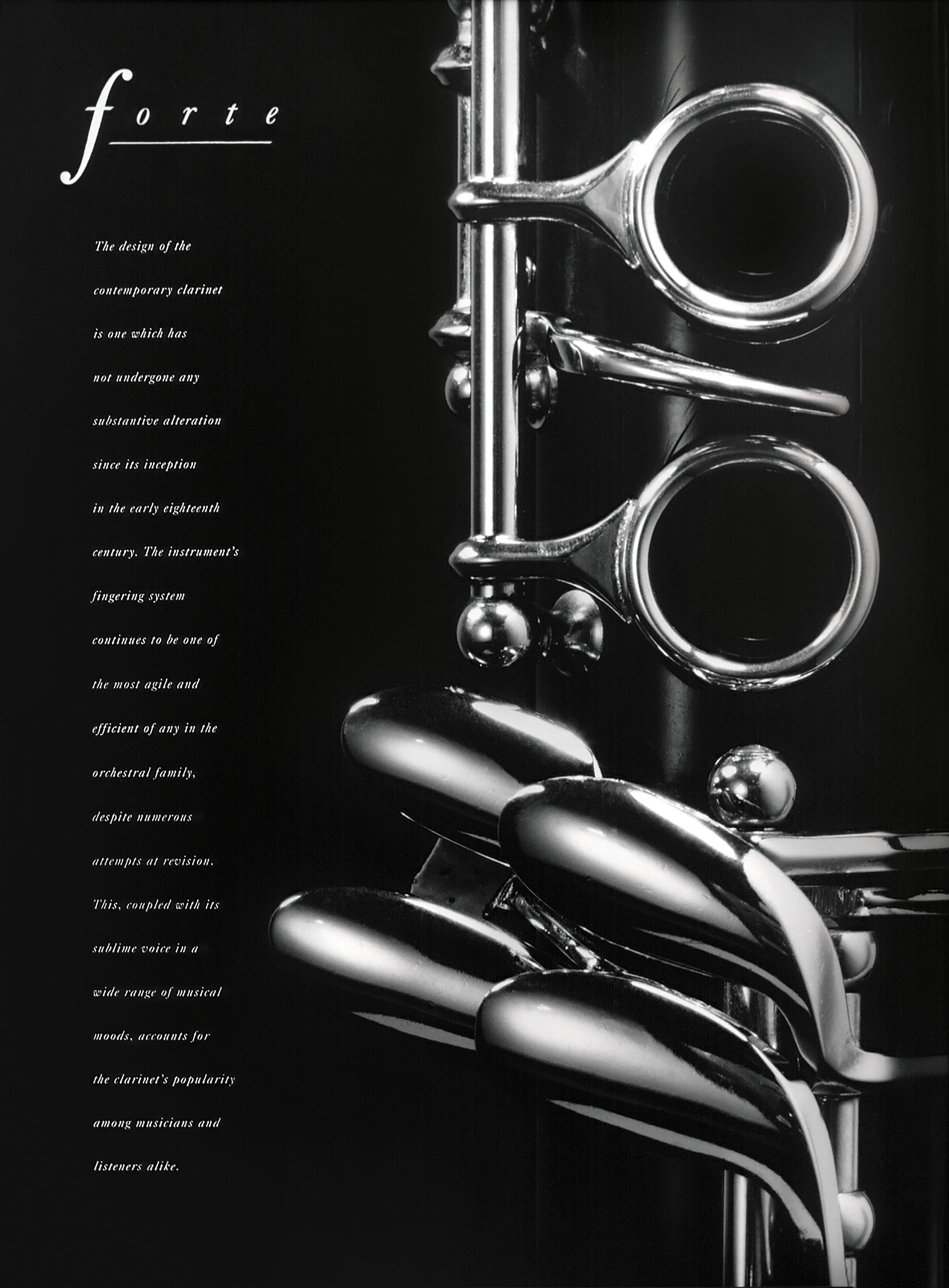
FORTE
The Forte series of photographs is a study in minimalism, paralleling the structural design of musical instruments to two dimensional design where each individual element is essential to the composition of the final piece. Actual Size: 18" x 24"
©1994 BRIAN CASSCLES

FORTE INTRODUCTION: A Revival of Sound Design
In addition being a musical term denoting tones to be played in a forceful manner, the word forte can also be construed as one’s strong point. This presentation is a visual and theoretical exploration of absolute form in design where no compositional elements are incidental; just as the curves, keys, valves and strings of an instrument contribute to the final sound of the music.
Forte serves as a means of illustrating this concept via a parallel to music. This campaign is designed to promote a musical instrument manufacturer utilizing classical methods of construction in an effort to revive both the craft as well as a concern for pure acoustic sound, a trend which is presently gaining momentum.

FORTE STRINGS
The violin epitomizes perfection in design, both as a passionate medium of music and as a timeless work of art. A performer’s instrument may be four centuries old, but it will not be dissimilar from one made yesterday. Antonio Stradivari, perhaps the world’s most celebrated violin maker, strived for an impeccable consistency of technique and a purity of form which has yet to be equaled.

FORTE WOODWINDS
The design of the contemporary clarinet is one which has not undergone any substantive alteration since its inception in the early eighteenth century. The instrument’s fingering system continues to be one of the most agile and efficient of any in the orchestral family, despite numerous attempts at revision. This, coupled with its sublime voice in a wide range of musical moods, accounts for the clarinet’s popularity among musicians and listeners alike.

FORTE PIANO
The pianoforte, as it was originally known, was first envisioned in the early eighteenth century. It’s design was inspired by a longing to invent a keyboard instrument capable of the strong accentuation and inflection distinctive of Roman string orchestras. The grand success of the piano was an affirmation that dynamic expression was an integral aspect of musical design.

FORTE DRUMS AND PERCUSSION
Instruments of percussion are perhaps the most ancient of all modes of musical expression. Cymbals not unlike the ones in use today are considered to be of Assyrian origin, with similar strains evident throughout antiquity. Although at one time used as an instrument of war and ritual, the cymbal has evolved into a truly symphonic one capable of an broad vocabulary of sounds and tonalities.

FORTE BRASS
The invention of the valve in the early nineteenth century and the consequent evolution of the brass family, has proved to be one of the few amendments to the orchestra in over five hundred years. The instruments have been empirically designed to achieve specific tonal ranges; everything from the length of the air column to the shape of the bell is a determinant affecting the sound quality that is perceived by the listener.
